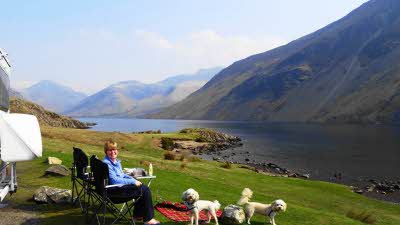Kalych replied on 01/10/2019 07:06
Posted on 01/10/2019 07:06
We have been caravan club members for 15 years during which time we have owned 2 Baileys, 1 Compass, 2 Elddis and now our first Swift (Conqueror 580). Over the years we have towed with Vauxhall Vectra v6, Shogun, Landcruiser and Volvo XC70. I have always made sure I had a tow car with plenty of BHP, Torque and kerb weight, also very careful with loading the caravan before going on the road (tyres, wheel nut torque, lights, etc). I considered myself a caravaner who understood the risks to ourselves and other road users associated with towing and planned accordingly, with no problems encountered until our recent change of both caravan and car.
We changed our caravan to the 2016 Swift 580 and at the same time changed our tow car to a 2016 Audi A6 Avant 3.0 Quattro with a dealer fitted new tow bar thinking it would tow the Swift with consummate ease, given the cars towing capacity is 2100kgs. We loaded the caravan, did usual checks and headed south from Aberdeen to Carlisle. On the way we had 3 occasions where the caravan swayed much more than normal as I passed an HGV and on one occasion had both my wife and I concerned. I pulled over and checked everything in case the loading inside had shifted but all was ok. We continued our journey south reducing road speed which stopped any further sway.
Once at our destination I started checking further and even called the Caravan & Motorhome Club technical support team where I was advised there should be no problem with the match however two factors (outside of loading) which may cause the sway are tyre pressure and nose weight. This caused me to check tow bar weights and found after contacting Audi it was only 75kgs for that car. Needless to say I purchased a calibrated nose weight gauge and discovered the Swift was around 85kgs with only a lightweight gas bottle in the front locker.
We are now about to change our tow car having had it only 4 months and the big lesson I learned was to know the maximum load the tow car can take on the tow ball, something I’ve never thought about in 15 years towing.
Interestingly, I called the Swift Group to ask the ex-works nose weight of an empty 2016 Conqueror 580 and was advised they are not obliged to provide the public with that information. Come on Swift Group, surely to comply with design specifications you have a nose weight threshold your completed ‘ex-works’ empty caravans must adhere to?
1 person likes this









Kalych
Caravanner from Aberdeenshire